Related Research Articles

Johann Carl Gottfried Loewe, usually called Carl Loewe, was a German composer, tenor singer and conductor. In his lifetime, his songs ("Balladen") were well enough known for some to call him the "Schubert of North Germany", and Hugo Wolf came to admire his work. He is less known today, but his ballads and songs, which number over 400, are occasionally performed.
Johann Gottfried Bernhard Bach was a German musician. It is not known whether he composed, and his career as an organist is not in itself notable, but his life throws light on his famous father, the composer Johann Sebastian Bach. Johann Gottfried was the fourth child of Johann Sebastian Bach and Maria Barbara Bach to reach adulthood.

Johann Gottfried von Herder was a German philosopher, theologian, pastor, poet, and literary critic. He is associated with the Enlightenment, Sturm und Drang, and Weimar Classicism. He was a Romantic philosopher and poet who argued that true German culture was to be discovered among the common people. He also stated that it was through folk songs, folk poetry, and folk dances that the true spirit of the nation was popularized. He is credited with establishing or advancing a number of important disciplines: hermeneutics, linguistics, anthropology, and "a secular philosophy of history."
Johann Bernhard Bach was a German composer, and second cousin of J. S. Bach.

The Bach family is a family of notable composers of the baroque and classical periods of music, the best-known of whom was Johann Sebastian Bach (1685–1750). A family genealogy was drawn up by Johann Sebastian Bach himself in 1735 when he was 50 and was continued by his son Carl Philipp Emanuel.
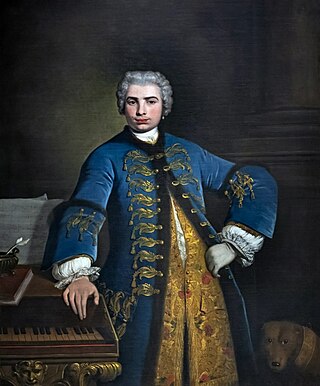
Coloratura is an elaborate melody with runs, trills, wide leaps, or similar virtuoso-like material, or a passage of such music. Operatic roles in which such music plays a prominent part, and singers of these roles, are also called coloratura. Its instrumental equivalent is ornamentation. Coloratura is particularly found in vocal music and especially in operatic singing of the 18th and 19th centuries.

Johann Wilhelm Ritter was a German chemist, physicist and philosopher. He was born in Samitz (Zamienice) near Haynau (Chojnów) in Silesia, and died in Munich.

Breitkopf & Härtel is a German music publishing house. Founded in 1719 in Leipzig by Bernhard Christoph Breitkopf, it is the world's oldest music publisher.
A coloratura soprano is a type of operatic soprano voice that specializes in music that is distinguished by agile runs, leaps and trills.
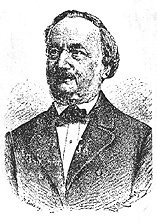
August Gottfried Ritter was a German romantic composer and organist.

Missa brevis usually refers to a Mass composition that is short because part of the text of the Mass ordinary that is usually set to music in a full Mass is left out, or because its execution time is relatively short.
The 17th century organ composers of Germany can be divided into two primary schools: the north German school and the south German school. The stylistic differences were dictated not only by teacher-pupil traditions and international influences, but also by separate organ building traditions: northern organs tend to have a tower layout with emphasis on the pedal division, while southern and Austrian instruments are typically divided around a window and emphasize manual divisions.
Jakob Adlung, or Adelung, was a German organist, teacher, instrument maker, music historian, composer and music theorist.

A Musen-Almanach was a kind of literary annual, popular in Germany from 1770 into the mid-19th century. They were modelled on the Almanach des Muses published in Paris from 1765.
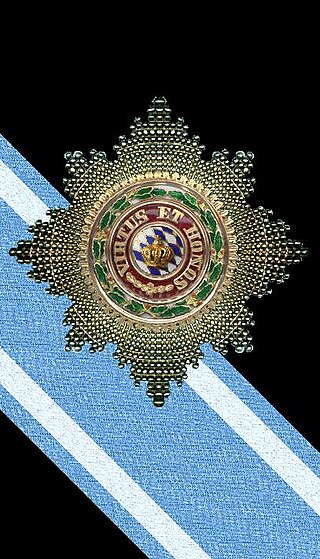
The Order of Merit of the Bavarian Crown was an order of merit of the Kingdom of Bavaria established by King Maximilian Joseph I on 19 March 1808. The motto of the order is Virtus et Honor.
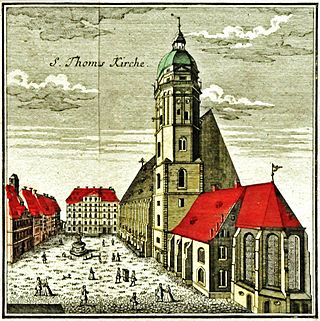
Thomaskantor is the common name for the musical director of the Thomanerchor, now an internationally known boys' choir founded in Leipzig in 1212. The official historic title of the Thomaskantor in Latin, Cantor et Director Musices, describes the two functions of cantor and director. As the cantor, he prepared the choir for service in four Lutheran churches, Thomaskirche, Nikolaikirche, Neue Kirche and Peterskirche. As director, he organized music for city functions such as town council elections and homages. Functions related to the university took place at the Paulinerkirche. Johann Sebastian Bach was the most famous Thomaskantor, from 1723 to 1750.

Gottfried Vopelius, was a German Lutheran academic and hymn-writer, mainly active in Leipzig. He was born in Herwigsdorf, now a district of Rosenbach, Oberlausitz, and died in Leipzig at the age of 70.

Gottfried Bernhard Göz, also Goez, Goetz or Götz, was a German Rococo painter and engraver.
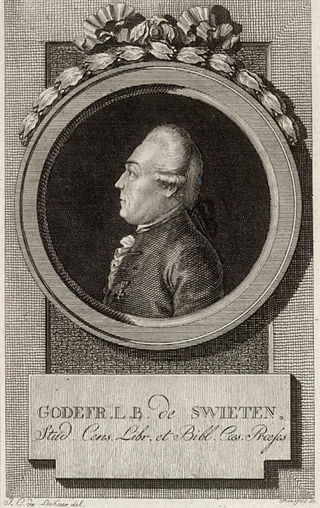
Der Messias, K. 572, is Wolfgang Amadeus Mozart's 1789 German-language version of Messiah, George Frideric Handel's 1741 oratorio. On the initiative of Gottfried van Swieten, Mozart adapted Handel's work for performances in Vienna.
References
- ↑ Randel, Don Michael. 2003. The Harvard Dictionary of Music. 4th ed. Cambridge, MA: Harvard University Press, p. 191.
- ↑ Ritter, Johann Gottfried. 1884. Zur Geschichte Des Orgelspiels: Vornehmlich Des Deutschen, Im 14. Bis Zum Anfange Des 18. Jahrhunderts. Leipzig.
- ↑ Hoelty-Nickel, Theodore. 1944. The Musical Heritage of the Church, vol. 5. Valparaiso, IN: Valparaiso University, p. 44